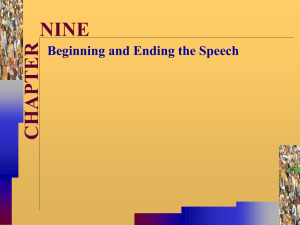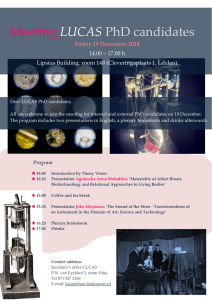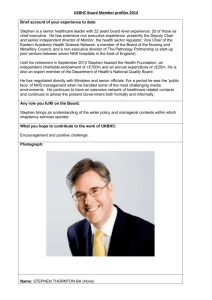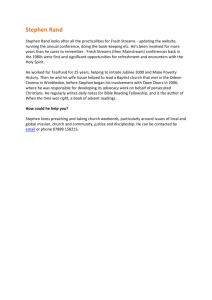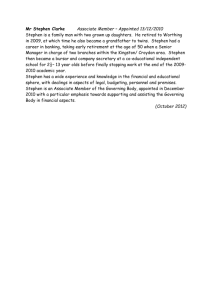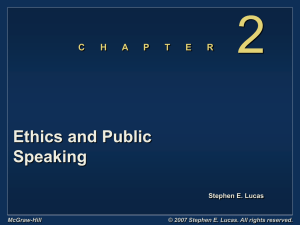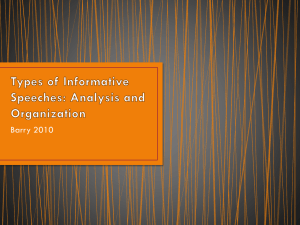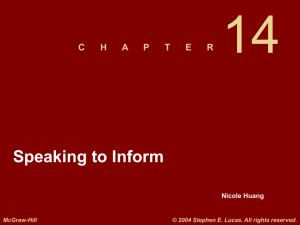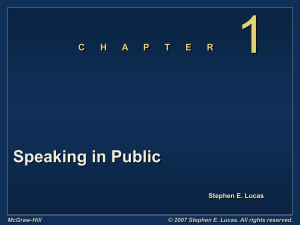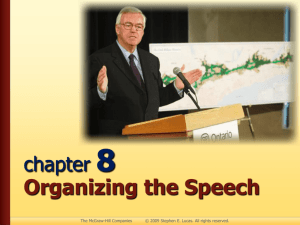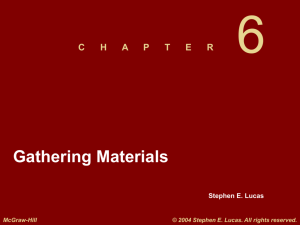Types of Informative Speeches: Analysis and Organization
advertisement
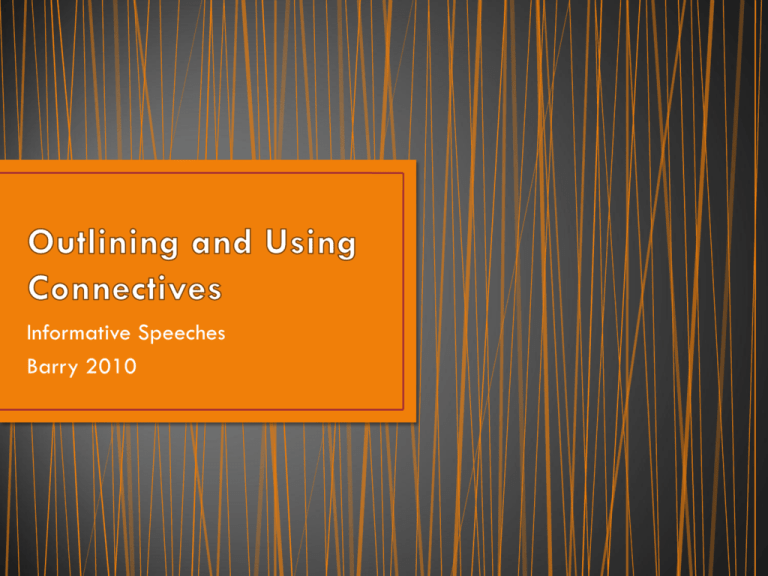
Informative Speeches Barry 2010 •Preparation outlines vs. speaking outlines •Refer to handouts! From The Art of Public Speaking by Stephen E. Lucas • Title • Specific purpose • Central idea • Label parts • Clearly label transitions and other connectives • Follow a consistent pattern of labeling and indenting • Bibliography includes all sources referenced in making the outline (At least 3 are required) • Bibliography follows MLA format From The Art of Public Speaking by Stephen E. Lucas •connective: a word or phrase that connects the ideas of a speech and indicates the relationship between them •Without connectives, a speech is disjointed and difficult to understand. •Four kinds of connectives: transitions, internal previews, internal summaries, and signposts. From The Art of Public Speaking by Stephen E. Lucas •transition: a word or phrase that indicates when a speaker has finished one thought and is moving on to another •Briefly state the previous idea and the idea you are moving on to. •Example: Now that we have a clear understanding of the problem, let me share the solution with you. From The Art of Public Speaking by Stephen E. Lucas •Internal preview: a statement in the body of the speech that lets the audience know what the speaker is going to discuss next •Use internal previews when they will help speakers keep track of ideas •Example: In discussing how Asian Americans have been stereotyped in the mass media, we will look first at the origins of the problem and second at its continuing impact today. From The Art of Public Speaking by Stephen E. Lucas •Internal summary: a statement in the body of the speech that summarizes the speaker’s preceding point or points •Use internal summaries when you’ve just finished a complex or significant main point or set of main points. From The Art of Public Speaking by Stephen E. Lucas •Example: [Internal Summary] Let’s pause for a moment to summarize what we have found so far. First, we have seen that America’s criminal justice system is less effective than it should be in deterring crime. Second, we have seen that prison programs to rehabilitate prisoners have been far from successful. [Transition] We are now ready to explore solutions to these problems. From The Art of Public Speaking by Stephen E. Lucas •signpost: a very brief statement that indicates where a speaker is in the speech or that focuses attention on key ideas •Used to help your speaker stay oriented and keep track of the points you have presented. From The Art of Public Speaking by Stephen E. Lucas •Example: The first cause of this problem is inefficient agricultural production. The second cause is recurrent drought in the affected countries. The final cause is mismanagement of available food resources by local leaders. From The Art of Public Speaking by Stephen E. Lucas •Example: So just how serious is the problem of mailorder fraud? Is it just a few isolated cases, or is it widespread enough to require serious measures to protect consumers? So how can we solve this problem? Is there a way to protect the rights of legitimate mail-order companies while attacking the fraudulent ones? From The Art of Public Speaking by Stephen E. Lucas
